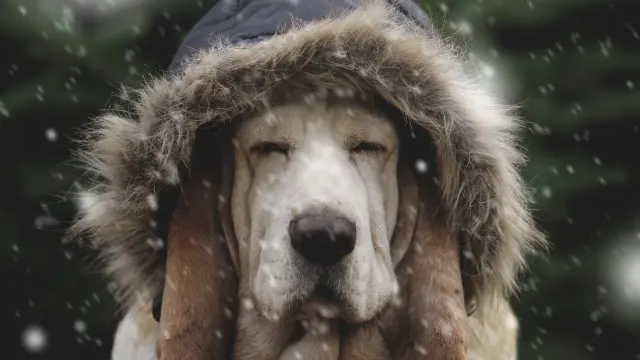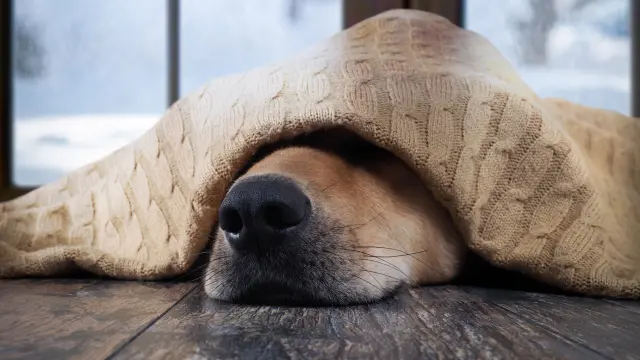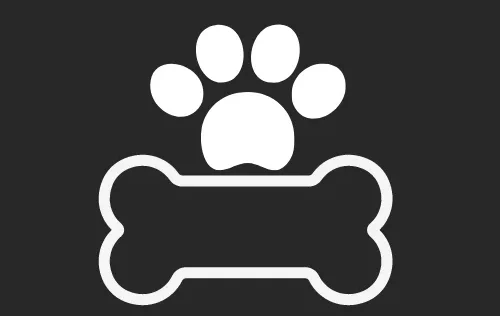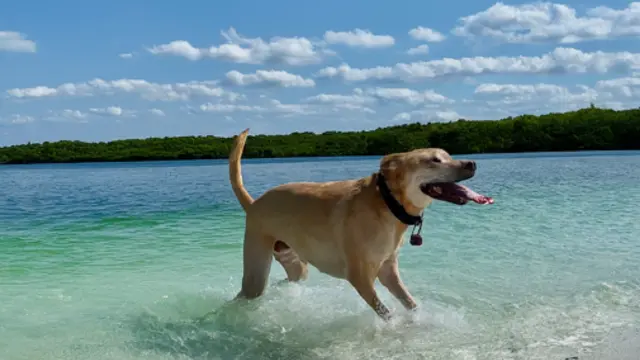Keep Your Furry Friend Cozy and Warm during Winter
Winter can be harsh, especially for our furry friends who spend most of their time outdoors. Keeping outdoor dogs warm in winter isn’t just about ensuring they stay comfortable; it’s also about protecting them from serious health risks. Cold weather poses dangers like hypothermia and frostbite, which can be life-threatening. In this guide, we will help you understand the best ways to keep your outside dogs safe and warm during winter.

Why Winter Care for Outdoor Dogs is Essential
When the temperature drops, our dogs are at risk. Hypothermia in dogs happens when they lose more body heat than they can generate. Symptoms include shivering, lethargy, and even unconsciousness. Frostbite, on the other hand, occurs when a dog’s extremities—like paws, ears, and tails—are exposed to cold for too long. This can lead to tissue damage and severe pain.
By taking steps to keep your dogs warm, you’re not just making them comfy; you’re also protecting them from these dangerous conditions. Let’s explore how to provide the best winter care for your outdoor dogs.
Best Practices for Keeping Outdoor Dogs Warm in Winter
Provide Proper Shelter
A well-insulated dog house is crucial during the winter months. Start by using materials like straw or cedar chips, which offer excellent insulation. Adding an insulated cover to the dog house can make a big difference in retaining heat.
Elevating the dog house off the ground is another good practice. A raised floor keeps your dog away from the cold ground, helping to maintain a warm environment inside the shelter. Remember, a warm shelter is key to winter care for outdoor dogs.
Ensure Adequate Bedding
Choosing the right bedding is vital to keep your dog warm. Straw is a popular choice because it doesn’t retain moisture, keeping it warm and dry. Thermal dog beds are also a great option, as they reflect your dog’s body heat back to them.
Rotate the bedding regularly to ensure it stays dry and fresh. Damp bedding can quickly become cold and uncomfortable, negating all your efforts to keep your dog warm.
Proper Location of Dog Shelter
Where you place the dog house also matters. Position it in a wind-protected area, possibly against a building, to shield it from the cold winds. Avoid placing the shelter in low-lying areas that might collect snow or rain, which can dampen the insulation and bedding.
Heating Solutions for Outdoor Dog Shelters
Heated Dog Beds
Heated beds and pads are safe and effective ways to keep your dog warm. Brands like K&H Pet Products offer heated pads specifically designed for dogs. These pads provide a consistent source of warmth, making cold nights more bearable for your pet.
When using heated pads, always ensure they are designed for pets to prevent any risk of burns or electrical hazards. Follow the manufacturer’s instructions for safe usage.
DIY Heating Solutions
You can also create a warm environment for your dog using DIY methods. Insulating materials like foam boards can be used to line the walls of the dog house. Solar blankets and self-warming pads are great alternatives that capture and reflect your dog’s body heat.
Installing a heat lamp or a space heater can also be effective, but make sure they are designed for pet safety. Always supervise to prevent any accidents.

Protective Gear for Dogs in Cold Weather
Winter Dog Coats
A well-fitted dog coat can make a significant difference in maintaining your dog’s body heat. Look for coats made from fleece-lined or waterproof materials. Brands like Hurtta Extreme Warmer and Gooby Cold Weather Dog Vest are excellent choices.
A good dog coat should cover your dog’s back, belly, and neck, providing maximum warmth without restricting movement.
Boots for Dog’s Paws
Dog boots are essential during winter to protect your dog’s paws from snow, salt, and ice melt. Muttluks and Ruffwear Grip Trex are among the best boots for paw protection.
If your dog isn’t fond of wearing boots, you can make a DIY paw balm using ingredients like coconut oil, beeswax, and shea butter. This balm will protect your dog’s pads from cracking due to the cold.
Feeding and Hydration During Winter
Increase Caloric Intake
Outdoor dogs burn more calories trying to stay warm, so it’s essential to increase their caloric intake. Provide nutrient-dense, high-fat food that gives them the energy needed to maintain body heat.
Consult with your vet to determine the right amount of food for your dog during winter to ensure they stay healthy and energetic.
Ensure Fresh Water
Water is just as important in winter as it is in summer. Use heated water bowls to prevent the water from freezing. Check the water frequently to make sure your dog stays hydrated.
Dogs can get dehydrated quickly in cold weather, as they may not feel as thirsty. Keeping an eye on their water intake is crucial.

Preventing Frostbite and Hypothermia in Dogs
Recognizing Signs of Frostbite
Common areas affected by frostbite in dogs are paws, ears, and tails. Look for pale, cold skin in these areas. If you suspect frostbite, gradually warm the affected area using warm towels and move your dog indoors.
Hypothermia Prevention
Signs of hypothermia in dogs include shivering, lethargy, and weakness. If you notice these symptoms, take immediate action by warming your dog with blankets and getting them indoors. Consult a vet if the symptoms persist.
Natural Remedies to Keep Dogs Warm
DIY Dog Coats and Bedding
You can create a dog sweater from old blankets or clothes. This is a cost-effective way to provide extra warmth. Additionally, making a DIY insulated dog bed using foam and reflective materials can keep your dog cozy.
Herbal Paw Balms
Natural paw balms are an excellent way to protect your dog’s paws from the cold. Use ingredients like coconut oil, beeswax, and shea butter to create a protective balm that prevents cracking.
Conclusion
Keeping your outdoor dogs warm in winter is not just about their comfort; it’s about their health and safety. By providing proper shelter, using heating solutions, equipping them with protective gear, and ensuring adequate feeding and hydration, you can protect your dogs from the harsh winter elements.
Remember, the key is to be proactive and take winter precautions seriously. Your furry friend relies on you to keep them safe and warm. For more tips and advice on winter care for dogs, explore our additional resources or consult with your vet.
Stay warm, and keep your furry friends even warmer!
Frequently Asked Questions (FAQs)
How often should I feed my outdoor dog in the winter?
It is recommended to feed your outdoor dog twice daily during the winter months. Increasing their caloric intake with nutrient-dense, high-fat foods helps them generate the energy needed to maintain body warmth. Always consult with your vet for tailored nutritional advice.
What are the best materials for insulating a dog house?
Foam boards, straw, and thermal blankets are excellent materials for insulating a dog house. These materials help retain heat and keep the shelter warm. Ensure that the insulation is kept dry and in good condition throughout the season.
Can I leave my outdoor dog out all night in the winter?
While some breeds can tolerate colder temperatures, it is crucial to ensure your outdoor dog has appropriate shelter that is dry, insulated, and wind-protected. Make sure they have access to a warm bedding area and check the weather conditions regularly to determine if they should stay inside.
What temperature is too cold for dogs to stay outside?
Each dog is different, but generally, temperatures below 20°F (-6°C) can become dangerous for dogs, particularly those without thick, insulating coats. Monitor the temperature closely and err on the side of caution by bringing your dog indoors when it gets too cold.
How can I tell if my dog is too cold outside?
Signs that your dog may be too cold include shivering, whining, slow movements, or reluctance to continue playing. If you notice any of these signs, it is best to bring your dog indoors immediately and warm them with blankets.
Are there any breeds that can stay outside in the winter more easily?
Breeds such as Siberian Huskies, Alaskan Malamutes, and Saint Bernards are more equipped to handle colder conditions due to their thick, insulating coats. However, each dog is individual, and it is crucial to monitor their comfort and safety in cold conditions.






